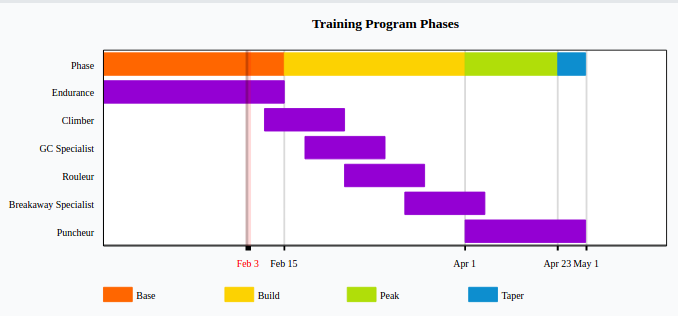Hi @Mordy111 - great question. You’re definitely on the right track with a 30 day challenge and a 5 minute Focus to target your VO2max.
In general, there are two “types” of VO2max-style efforts:
- Sustained high-intensity efforts
These are longer intervals that hover just below or around your VO2max power. In Xert, these tend to fall under GC Specialist (8min) or Climber (10min) Focus. They’re tough mentally and physically - you’re pushing hard for several minutes at a time.
A great series to try here is the “Closer” workouts. Start with the 140 XSSR version and work your way up to 150, 170, or even 200 if you’re feeling really bold. These are SMART workouts that adapt in real time based on your fatigue, and they work best when done using the Xert EBC app - the curved decline in interval power doesn’t export well to other platforms.
Example: SMART - Closer - 170
Side note: Interestingly, our curved (decaying) XSSR intervals used in the Closer series actually pre-date the now popular “hard start” interval studies - which have shown that front-loading intensity increases the time spent above 90% VO2max. That time-above-90%max is often considered the gold standard for eliciting VO2max adaptations.
- Repeated, shorter efforts
You’ll see all sorts of micro-intervals like this: 30/15s, 20/10s, 30/30s, etc. They typically fall under Puncheur (4min) or Breakaway Specialist (5min) Focus. These efforts are shorter but sharper, requiring more intensity and less sustained pacing, since you have micro-recoveries between each harder effort.
If you’re using the Magic Buckets feature, you might notice it nudging you toward this style of training when your recommended training is in the 4–5 min range.
For something a bit more unique, you could also try SMART - Bow Down, which was inspired by a 2020 study on HIDIT (High-Intensity Decreasing Interval Training). The intervals start long (to elevate heart rate), then decrease in duration while maintaining intensity. It’s a tough one, but a creative way to hit and sustain high levels of your HRmax/VO2max.
Hope this helps give you a few solid directions to explore… let us know how the 30-day challenge goes or if you find a specific workout that really worked well for you! 

 Go at least for Rouleur, and feel free to try shorter duration as well
Go at least for Rouleur, and feel free to try shorter duration as well 